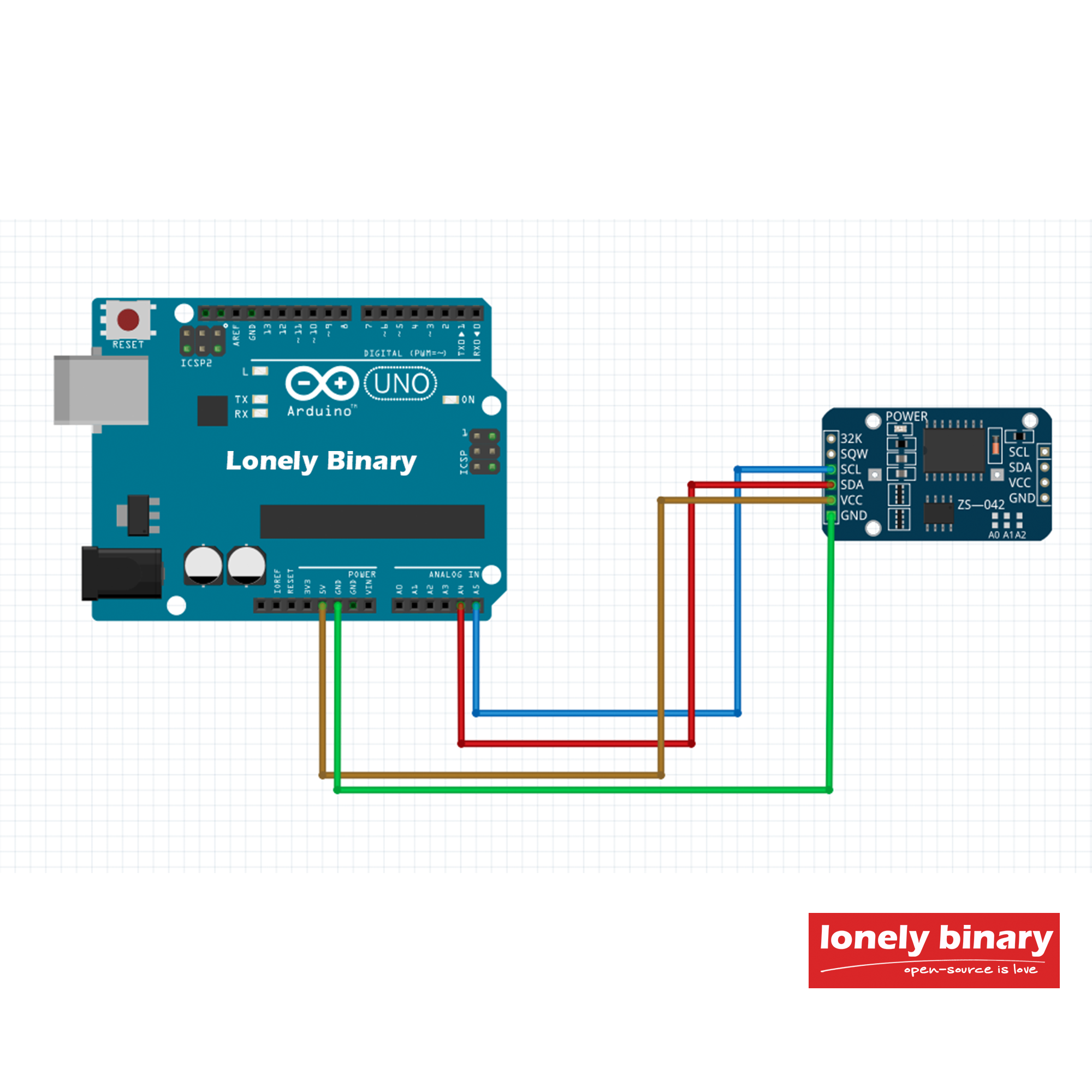Table of Contents(2)
Overview
Interface DS3231 Precision RTC Module with Arduino
In many of projects, the microcontrollers (MCUs) we use are typically not equipped to handle time-related functions. While this may suffice for most cases, there are instances where accurate timekeeping becomes crucial. This is where the DS3231 Precision RTC module proves invaluable. With its precise timekeeping capabilities, it is well-suited for a diverse range of projects, such as clocks, timers, alarms, data logging, and time stamping.
The core of this module is based on the DS3231S RTC chip, known for its exceptional capabilities, coupled with the AT24C32 EEPROM. These components have been in use for a considerable period and enjoy robust library support, ensuring reliable and well-documented functionality.
However, it is important to note that certain DS3231 modules may be supplied with a non-rechargeable CR2032 battery instead. In such cases, it is crucial to remove the resistor from the circuit. Charging a non-rechargeable battery can lead to severe damage and should be avoided.
DS3231 RTC Chip
At the core of this module lies the DS3231 RTC chip, designed by Maxim. This low-cost yet highly precise chip handles all timekeeping functions and establishes communication with the microcontroller via I2C.
The DS3231 excels in tracking various time elements, including seconds, minutes, hours, days, dates, months, and years. It even automatically adjusts the date for months with less than 31 days, and it accounts for leap year corrections, maintaining accuracy until the year 2100.
Furthermore, the DS3231 generates a stable and accurate reference clock on its 32K pin. This clock output, which is temperature compensated, proves useful in certain applications for measuring clock timing accuracy or serving as a clock source for other circuits.
Battery Backup
You are correct that the built-in power-sense circuit in the DS3231 continuously monitors the VCC (power supply) status. This circuit actively detects power failures and seamlessly switches to the backup power supply. As a result, even during a power outage, the DS3231 IC can continue to accurately keep time without any interruptions.
To provide backup power, the module includes a battery holder located at the bottom of the board. This battery holder is specifically designed to accommodate a 20mm 3V lithium coin cell. By inserting a compatible coin cell battery into the holder, you can ensure that the DS3231 module has a backup power source to maintain accurate timekeeping even when the main power supply is interrupted.
Assuming that you utilize a fully charged 220mAh coin cell battery and manage to keep the current draw of the DS3231 chip at a minimum of 3µA, it is estimated that the battery will be capable of powering the RTC (Real-Time Clock) module for a duration of at least 8 years. This long-term power supply from the coin cell battery eliminates the requirement for an external power source, providing extended and reliable operation of the RTC without the need for frequent battery replacements.
Lab Objectives
Understand the fundamental principles and components of the Arduino Uno R3 board and DS3231 module.
Acquire and display real-time data, including date and time, from the DS3231 module using the Arduino Uno R3.
Develop programming skills by writing code to control and utilize the DS3231 module with the Arduino Uno R3, enabling precise timekeeping and alarm triggers.
Gain hands-on experience in troubleshooting and resolving common issues related to the DS3231 module and Arduino Uno R3 board.
Implement alarm functionalities using the DS3231 module, allowing for scheduled events or notifications.
Apply the knowledge gained to create practical applications, such as real-time clock displays or time-triggered actions, using the UNO R3 board and DS3231 module.
Components and Supplies
Pinout
| # | Pin | Function |
|---|---|---|
| 1 | 32K |
pin outputs a stable and accurate reference clock. |
| 2 | INT/SQW |
pin provides either signal. |
| 3 | SCL |
a serial clock pin for the I2C interface. |
| 4 | SDA |
a serial data pin for the I2C interface. |
| 5 | VCC |
provides power to the module. |
| 6 | GND |
ground pin. |

Wiring
| # | DS3231Pin | UNO R3 Pin |
| 1 | SCL | A5 |
| 2 | SDA | A4 |
| 3 | VCC | 5V |
| 4 | GND | GND |

Library

cvmanjoo/RTC
The RTC library is designed to function with DS3231 on various architectures. It offers compatibility with all architectures, making it suitable for use with Arduino boards. This library enables essential functionalities such as reading and setting the clock, as well as managing alarms and timers for I2C RTCs.
Installing a library is a straightforward process that can be done swiftly. To begin, launch the Arduino IDE. Once the editor is open, direct your attention to the left column. Here, you'll notice a few icons. Locate and click on the "library" icon. Instantly, a comprehensive list of all the libraries at your disposal will materialize. You also have the option to search for a specific library. Once you've identified the desired library, simply click on the "INSTALL" button, and the installation process will commence.


4 thoughts on “DS3231 Real Time Clock Tutorial with Arduino UNO R3”
RC
Impressed by the clear and concise info! Great resouce!
Alan Cui
I have learned the knowledge and learned how to operate.
Very useful!!!
Sim
Awesome information!!
Kai
Good to Learn!